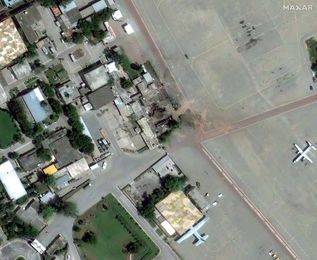Apologies, Matthew Arnold! Intelligent, not ignorant, armies have clashed by the night. Not on Dover beach, but over the Indus plains and Karakoram hills for three nights.
There were three battles in the Sindoor war (I call it war because it was waged between two militaries)—a battle of missiles, a battle of guns, and a battle of drones. The last may go down as history’s least lethal war. It killed none; neither side claimed to have hurt humans nor suffered hurt to humans! Even the Anglo-Zanzibar war, history’s shortest (44 minutes), killed a few.
First about the battle of missiles. India’s opening shots were at nine terror holes from Muzaffarabad in Pak-occupied Kashmir to Bahawalpur in Pak-owned Punjab—24 strikes delivered from war-jets in 25 minutes from 1.05am on May 7. Pakistan claims to have sent up fighters, shot down one or two of our birds. No proof. We may know once the fog of battle clears.
This was the most lethal of the three battles. Took a few lives—bad lives. Pakistan conceded their 11 soldiers and 40 ‘civilians’ were killed. More, says India. We will leave the body-count alone as in the case of the birds downed. No prizes for guessing who the ‘civilians’ were. Civilian terrorists get military funeral there.
Then there was the old ‘border’ war along the LoC, fought on and off for eight decades. It usually stays cold, but turns hot when Pakistan has a fresh batch of terror graduates to be sent to our side. Their troops open fire, giving cover for the boys to sneak in. It can also turn hot when either side wants to have a photo-shoot (pun intended) or when the area’s CO had had a bad breakfast.
Most of these LoC firings end in local-level flag meetings or truces decided at higher level. One such truce had been holding since 2021, but sparks have been flying past few months. Perhaps that was when Pakistan was planning Pahalgam. Anyway, the shells and bullets fired from the other side are said to have killed about our 20 troops and civilians. Sad! But nothing new. These two were lethal battles.
There was a third one. It lasted three nights along the LoC and the longer border. It killed none. It was a novelty. It hasn’t yet been fought over South Asian soil or in its airspace.
It started on Wednesday, the night after our missile strikes. Hundreds of drones swarmed across the border and the LoC like fireflies in the woods—lighting up the night air but hurting none. We claim to have shot down every one. Probably yes, probably no. Either way, it hurt none. Except perhaps damaging—not destroying—a few air defence installations.
Soon, it was our turn. We sent our drones to their air bases, including the ones near Islamabad and Lahore. They damaged the enemy’s air assets, but left its managers alive. Pretty decent.
This drone war, decently non-lethal, went on till Pakistan upped the ante on Saturday morning. They sent a “high-speed” missile through the swarm of drones. India shot it down over Sirsa.
Now the real game was afoot. We again scrambled our Rafales and MiGs, and shot missiles at close to a dozen air stations across the border and LoC, damaging Pak radars, installations and command-control consoles, but (hopefully) killed none. Pakistan sued for ceasefire.
Now, why did the generals send drones to hit us? Three guesses. One, to tell the public of Pakistan that they were hitting India. Two, to scare us—to tell us that they know where our air defence assets were located. Three, by hitting without hurting, they were pleading with us to pipe down.
prasannan@theweek.in


